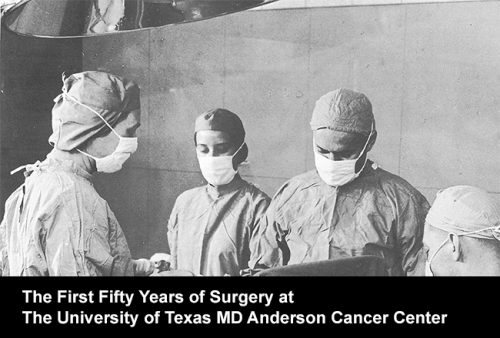

Raymond Sawaya, MD, Oral History Interview,The First 50 Years of Surgery at MD Anderson (1945 – 1995), March 12, 2019
Files
Loading...
Description
Major Topics Covered:
- Division of Surgery: evolution of departments within; resources; leadership of; key figures
- Division system: value of; support of; impact of; strategic planning
- Department of Neurosurgery: philosophy of; growth of; technology
- Surgery at MD Anderson: culture of; evolution of; subspecialization; surgical oncology; training programs; operating rooms
Interview Chapters
Chapter 01: Creating a Division of Surgery
Chapter 02: Developing a Comprehensive Neuro-Service
Chapter 03: Shifting Surgical Culture and Research; Building Subspecialization and Training
Chapter 06: Key People in the New Division System; Final Comments on Teams
Identifier
SawayaR_01_20190312
Publication Date
3-12-2019
Publisher
Historical Resources Center
City
Houston, Texas
Creative Commons License

This work is licensed under a Creative Commons Attribution-Noncommercial-No Derivative Works 3.0 License.
Topics Covered
MD Anderson History; MD Anderson Snapshot; Research
Disciplines
History of Science, Technology, and Medicine | Oncology | Oral History | Surgery
Recommended Citation
Sawaya, Raymond MD; Balch, Charles M. MD; and Rosolowski, Tacey A. PhD, "Raymond Sawaya, MD, Oral History Interview,The First 50 Years of Surgery at MD Anderson (1945 – 1995), March 12, 2019" (2019). History of Surgery - Interview Sessions. 7.
https://openworks.mdanderson.org/surgeryhist_interviewsessions/7
Conditions Governing Access
Open




About the Interview
About the Interview Subject
Dr. Raymond Sawaya (b. 5 May 1949, Latakia, Syria; oral history interview) came to MD Anderson in 1990 to become chair of the Department of Neurosurgery, a role he served until 2018. He created a comprehensive, multi-disciplinary, brain and spinal cord tumor program, with clinical, educational, and research activities. Dr. Sawaya is known for his research into the role that fibrinogen plays in allowing cancer to invade the brain; he has also conducted work on primary and metastatic brain tumors, third ventricle, brain stem and pineal region tumors. He has made strides in enhancing the accessibility and safety of brain tumor surgery. In 2001, Dr. Sawaya formed and headed the Brain Tumor Institute; in 2005 he helped create and became head of a joint program in neurosurgery established with the Baylor College of Medicine. He was interviewed for MD Anderson’s institutional oral history project in 2013. The full interview is available at: https://mdanderson.libguides.com/SawayaR.